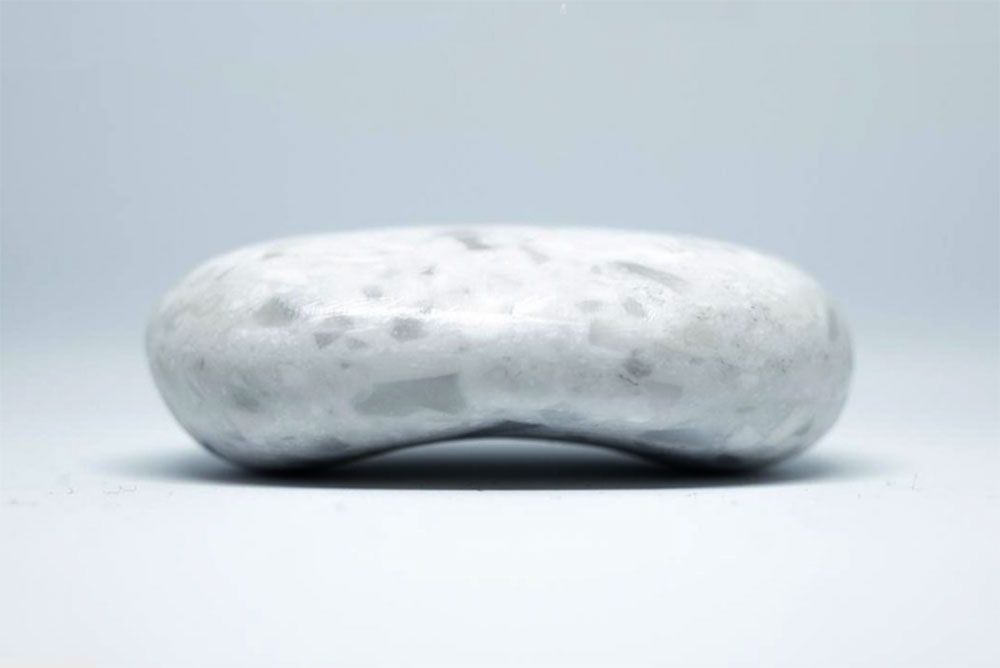
Moment Pebble
WHEN I walked into a recent board meeting, I spotted a relatively new member whose name I didn’t remember. But while going through the alphabet—my customary mnemonic device—I tripped on the carpet.
The best antidote to forgetting and to falling, in addition to many stress-related health issues? It may be mindfulness, but only when calm and focused attention becomes habitual.
One testament to the numbers of people searching and willing to pay good money to become more mindful is a recent kickstarter campaign for the “Moment Pebble,” a small lighted rock that dims and brightens to guide breathing during a 30-second period.
By last month, the Pebble had raised $74,000 from U.S. backers and thousands more pounds from its British fans on Kickstarter, where about $50 (converted from pounds) secured one Pebble to be delivered in September. In the ongoing effort on Indiegogo, one Pebble requires $51; the selling price after the official market launch will be around $75.
Although it sounds silly and pricey, the pebble’s glowing light promises to focus the mind and slow the breath, the two most important components of mindfulness meditation. In this type of meditation, “you focus on being intensely aware of what you’re sensing and feeling in the moment, without interpretation or judgment…engaging your senses outdoors is especially beneficial.”
While daily meditation sessions can increase focus and calm, it can be most difficult to employ mindfulness at exactly those hectic times when risks of forgetting and falling—and of long-term health effects from stress hormones coursing through the body—are the greatest and most worrisome.
From the outset, developing a mindful meditation practice usually requires serious, personal and in-depth training.
For DC artist A.M., a 90-minute session at The Mindfulness Center (TMC) in Bethesda made the difference. Therapist Aurora Hutchinson listened to A.M.’s problems—debilitating head pain concentrated in her jaw that persisted following a concussion —and worked with her to teach and practice relaxation and meditation techniques tailored to her needs.
In her standard 60-minute “Stress Reduction and Lifestyle Counseling” sessions, Hutchinson uses mindfulness meditation to improve overall health and to help with issues like navigating transitions, prioritizing and finding motivation, according to TMC’s Jessie Taylor.
A more intensive training, the eight-week “Mindfulness-Based Stress Reduction” (MBSR) course, has helped many thousands of people since its creation by Jon Kabat-Zinn at the University of Massachusetts, Amherst, in 1979. (It’s offered locally by the Insight Meditation Community of Washington.)
I had tried learning mindfulness on my own using the MBSR workbook and CD, but it took the course’s weekly meetings, along with daily practice using the five-to-45-minute CD-guided-meditations for me to ratchet down my stress levels. The $500 class fee provided extra motivation.
Spending 10-15 minutes attending to my in-breath and out-breath has become an effective, efficient way to calm my mind —even on the most stressful days— but it also affects my body and usually puts me to sleep. Despite the positive nap effect, I miss out on practicing focus and attention.
Many in the mindfulness community are opposed to gadgets. Richard Davidson, founder of the Center for Healthy Minds at the University of Wisconsin-Madison and a “dedicated meditator,” points out that meditation in Sanskrit means “familiarization,” referring to one’s increasing familiarity with the nature of one’s own mind. Focusing on external signals can be a distraction from learning about ourselves and becoming more effective meditators.
Most mindfulness-improvement gadgets cost more than $100, most respond to and track stress levels, and most are worn on the body. The Muse includes a large sensor band placed on the forehead; the Thync sends the appropriate vibrations to pressure points behind the ears when it senses the need for boosting energy or calmness.
The “Spire”—also described as Pebble-like—measures breathing and guides breathing exercises when needed.
The Phi, another hand-held device, tracks calm and focus and offers both real-time alerts of stressful breathing and an interactive multisensory experience, stimulating all the senses except taste.
Compared to other gadgets, the Moment Pebble activates only when the user chooses (no feedback or tracking) to provide 30 seconds of mindfulness practice. And because the Pebble’s dimming and brightening light guides the breath, a user’s eyes must stay open—no falling asleep —until the final pulse of bright light indicates “the end of your moment.” Though paying for a pebble still sounds silly, the Moment Pebble might offer the help I need.
—Mary Carpenter
Every Tuesday in this space, well-being editor Mary Carpenter reports on health news you can use.
